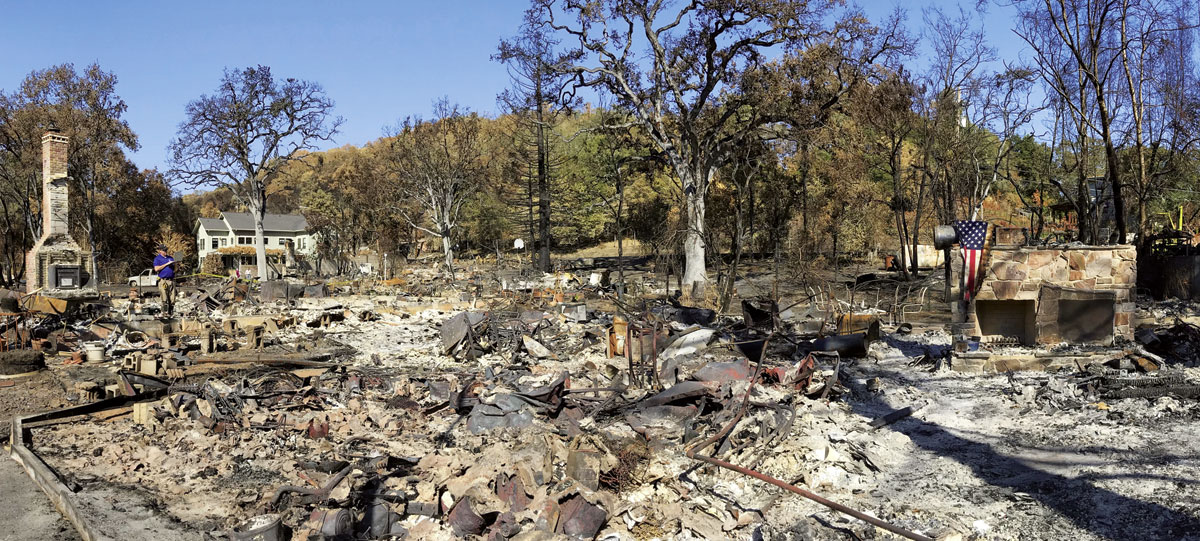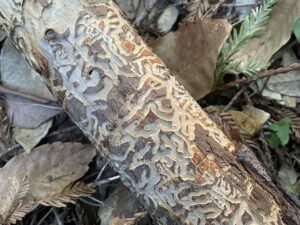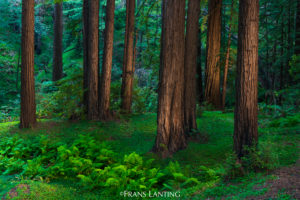I drove away from the Pepperwood Preserve in the Sonoma County hills on a hot and windy Sunday evening in October feeling hopeful. I’d spent part of the day talking with members of the California Naturalist Program about wildfire-induced emotional trauma in the region. As I arrived home in Berkeley later that evening, however, that peculiar fire weather feeling Joan Didion described as when the “winds show us how close to the edge we are” kicked into overdrive. Several hours later, I awoke to the overwhelming smell of smoke and the news that people all over the Bay Area were hearing: a number of large fires were running wild through the beautiful place I’d left just the night before.
As the days went on, a horrifying picture emerged. Story after story of sudden and terrifying evacuations appeared. Whole neighborhoods had been awoken in the middle of the night by people—some police and firefighters, but many simply neighbors—banging on doors or honking horns as emergency alert systems lagged.
These reports from citizens are harrowing enough on their own but, as a scientist working on disasters like drought and wildfire in California for over a decade, I’m especially struck by the changing commentary from the emergency response community itself. As an example, Cal Fire Chief Ken Pimlott told the Sacramento Bee that “it’s becoming more the norm now to have multiple damaging fires” at the same time. In the Ventura County Star, Cal Fire Battalion Chief Jonathon Cox said the fire was “unstoppable.” Santa Rosa Fire Chief Tony Gossner noted the pace of alerts and evacuations simply couldn’t keep up with the pace of the fire. These are remarkable statements from top-down, command-and-control institutions.
Even more telling are Gossner’s remarks about fire-safe landscaping, one of the long-standing hallmarks of fire prevention. He said, “We want the fire-wise communities, so if a fire starts, we can jump on it and put it out. That gives us a chance. It doesn’t mean it’s going to prevent it.”
There was a time not long ago when it would have been difficult to find fire officials, whose focus is most often on suppression, talking so publicly about how unmanageable some wildfires can become. It might be the threat of more fire in a changing climate, or just a long-overdue admission, but even first responders seem increasingly open to acknowledging the limits of human control in disaster situations, even in highly developed places.
The admission that our best efforts may not always be enough opens a small window to shift how we think about disasters. For the North Bay in particular, it provides an invitation to rebuild creatively, in ways that are consistent with what we know about the local environment. As I’ve spoken with Sonoma County residents, it has become clear that anguish and deep grief will persist. At the same time, there is also hope that the fires served to reveal existing inequalities, offering an invitation to heal and transform, to cultivate new alliances, and to re-envision everything from affordable housing availability to a more equitable local economy.
There are still incentives—particularly arcane insurance requirements and building codes—working to keep things largely as they were. But as people commit to regenerating lives and communities, they are also reimagining the world they inhabit. Time will tell if they are able to do the things that might signal real change, like limiting building in the most fire-prone areas, requiring fire-safe structures even in places that may appear impervious, and developing realistic evacuation procedures that take into account the most vulnerable citizens.
There is no doubt that this disaster has deeply tested our assumptions about how we live with wildfires, notably the idea that we can control them. From Houston to Puerto Rico to here at home in California, disasters are revealing new ground that is paradoxically both shakier and more solid than it once seemed. We may find our footing by finally embracing the fact that we can’t always be in charge.





